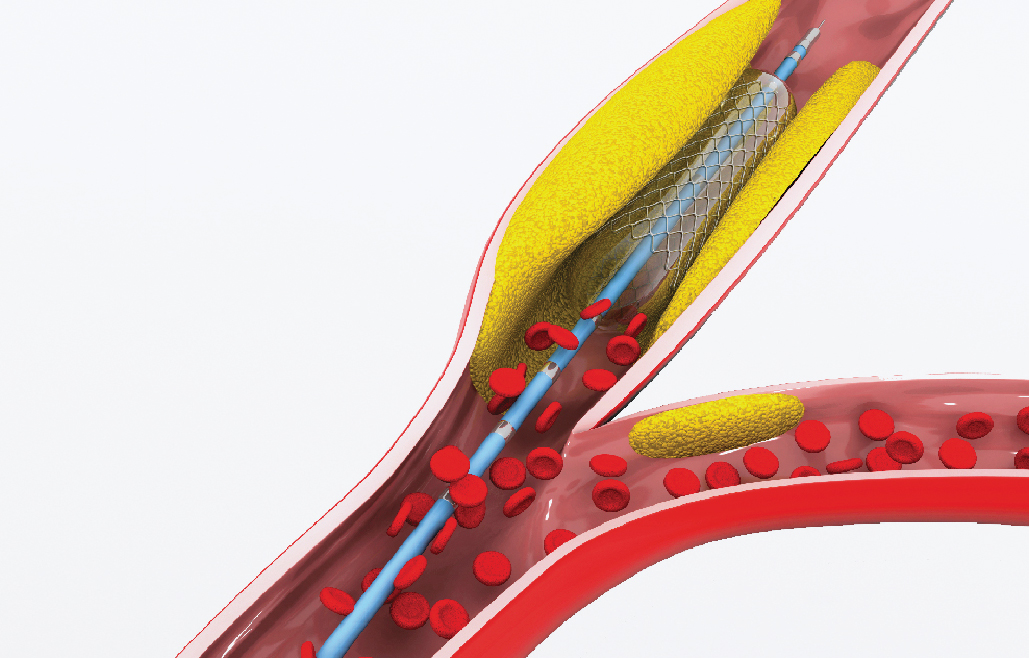Transcatheter valve replacement (TAVI) and biplane techniques reduce pain without surgical scars
Center : Heart Center
 แ.jpg)
Aortic stenosis valve problems cause abnormal opening and closing of the heart valves, resulting in poor blood flow or abnormal circulatory system. If left untreated, the heart will work harder. The heart walls thicken and lead to a heart attack and is life threatening. Patients with severe stenosis of the heart valve must be treated with heart valve repair surgery or in the case that cannot be repaired. Your doctor may consider prosthetic heart valve replacement, which is a standard thoracic surgery procedure. But nowadays, there is technology to replace heart valves through a catheter without surgery or TAVI (Transcatheter Aortic Valve Implantation), which is another option to reduce complications. Reduce the risks associated with surgery help patients return to daily life quickly.
Choose to read by topic:
- How dangerous is valvular heart disease?
- TAVI technique for treating heart valve stenosis without surgery
- Who is suitable for TAVI treatment for valvular stenosis?
- Advantages of TAVI treatment for heart valve stenosis
- Preparing for TAVI
- Procedure for TAVI treatment of heart valve stenosis
- Increase the potential of treatment with Biplane
- Post-treatment for valvular stenosis
- Possible risks
- Online Consultation
How dangerous is valvular heart disease?
Heart valve abnormalities both deteriorate with age and fatty deposits or limestone. Until it causes the heart valves to not work properly until severe valvular stenosis occurs. It is most often found in the aortic valve that separates the left ventricle and the aorta. This prevents the heart from pumping enough blood to the different parts of the body. When the heart valves are constricted or narrowed, the consequences are:
- When the heart contracts the heart valve refuses to open causing insufficient blood flow to feed different parts of the body and when there is resistance, the heart has to work harder. In the early stages, the heart will adjust to be thicker to create more compression force. But the ability to relax slows down. As a result, the patient is easily tired, frequent fainting and weakness.
- When left for long periods of time, very thick hearts lose their elasticity. This can lead to heart failure or a heart attack and may be life-threatening.
TAVI technique for treating heart valve stenosis without surgery
Non-surgical catheter valve replacement, or Transcatheter Aortic Valve Implantation (TAVI), is a procedure to repair or replace existing deteriorated or inoperable heart valves, with the use of a catheter through an artery in the groin. Then a tissue heart valve is attached to a special stent, sent up to the aortic valve position by the guiding tube system. After that, the artificial heart valves are released to be spread out to replace the original heart valves. In this way, the patient will not have surgical scars on the chest area or under the breast like standard surgery. There will be only an incision in the groin area from inserting the catheter only.
Who is suitable for TAVI treatment for valvular stenosis?
In addition to small healing devices, another thing that is important in the radiotherapy work is the various radiological devices, including:
- elderly patients, especially those aged 75 years and over.
- Those who have physical conditions that are unsuitable for surgery or have high risk factors from surgery under the consideration of a physician.
- Patients with severe aortic stenosis
- Patients with congenital disease such as lung disease, aortic stenosis or have had previous heart surgery.
- Those who are not in a state of metastatic cancer.
Advantages of TAVI treatment for heart valve stenosis
- Minimal incision, no chest wound.
- Less pain, faster recovery
- No anesthesia required.
- Reduce the rate of recurrence.
- The outcome of the treatment is as good as a standard heart surgery.
- It is beneficial for the elderly or people with underlying medical conditions who may not be able to withstand long hours of major surgery.
Preparing for TAVI
- The patient will undergo a detailed physical examination and health history and assess the severity of valvular stenosis, such as blood tests, x-rays.
- Assess the readiness of the body for TAVI treatment.
- Your doctor will ask about any medications, supplements, vitamins, or herbs you are currently taking. Patients should prepare such medicines with them.
- If wearing dentures or braces, inform your doctor first.
- On the morning of treatment, the patient should clean the body and change into a new set of clothes. Do not apply lipstick, nail paint and powder on the body.
- Remove jewelry, dentures, and leave valuables with relatives.
- For patients safety, will have their blood pressure and oxygen measured in the blood and ECG examination, etc.
Procedure for TAVI treatment of heart valve stenosis
The patient will lie on the bed. Local anesthesia will then be given. Your doctor will insert an artificial heart valve, a tissue heart valve attached to a special tool using a catheter through your groin artery and/or through the skin at the apex of the heart by incision in the skin of the thorax between the ribs and/or through the aorta, performed via a cutaneous incision in the upper thoracic region. That can be rolled up to fit into a small tube about 8-10 millimeters when the catheter reaches the location of the aortic valve stenosis. Your doctor will use a special tool to insert an artificial heart valve. By inflating the balloon to push the artificial heart valve out. It becomes a new heart valve instead of the old one that has deteriorated. This treatment typically takes about 2-3 hours.
Increase the potential of treatment with Biplane
X-ray machine for diagnosis and treatment of vascular disease, Biplane Digital Subtraction Angiography or Biplane DSA, has a similar working principle to a computed tomography machine that can take pictures of blood vessels in two planes at the same time, anterior and lateral, so the resulting image is sharp. This allows the doctor to clearly see the very small catheter. It is like seeing a 3D image, allowing the doctor to precisely pass the catheter through the artery to the specific location of the aortic valve stenosis.
Post-treatment for valvular stenosis
- In the case of inserting a catheter through an artery in the groin. Lie on your back and do not lift your head. Don't bend your right leg or the side where the catheter is inserted and a pillow will be placed over the wound to apply pressure for 4 hours to stop the bleeding.
- After the first 3 months of TAVI, anticoagulants must be taken. not exercising too hard
- After 3 months of recovery, the patient can lead a normal life. Shortness of breath and chest pain will gradually disappear.
- How long will a heart valve inserted through a catheter last? It depends on many factors and will vary from person to person. This will help your doctor determine if your heart valves are still working properly.
Possible risks
Possible risks and little or no occurrence from inserting artificial heart valves using catheter techniques, including:
- Bleeding or a blood clot caused by bleeding and accumulation under the skin or infection at the catheter insertion site.
- damaged blood vessels
- kidney problems from the excretion of contrast material from the body
- thrombosis constricts the blood vessels in the brain
- myocardial infarction
- arrhythmias
- Prosthetic heart valve slipping out of position
- loss of life
However, non-surgical catheter valve replacement with TAVI requires a skilled medical team. Including cardiologists, radiologists, anesthesiologists, nursing teams, operating room staff. The Nakornthon Hospital heart center All have expertise. Availability of medical technology Standardized modern machines, ready to treat and take care of patients to have a better quality of life.
Online Consultation
Article of Heart Center


.jpg)

